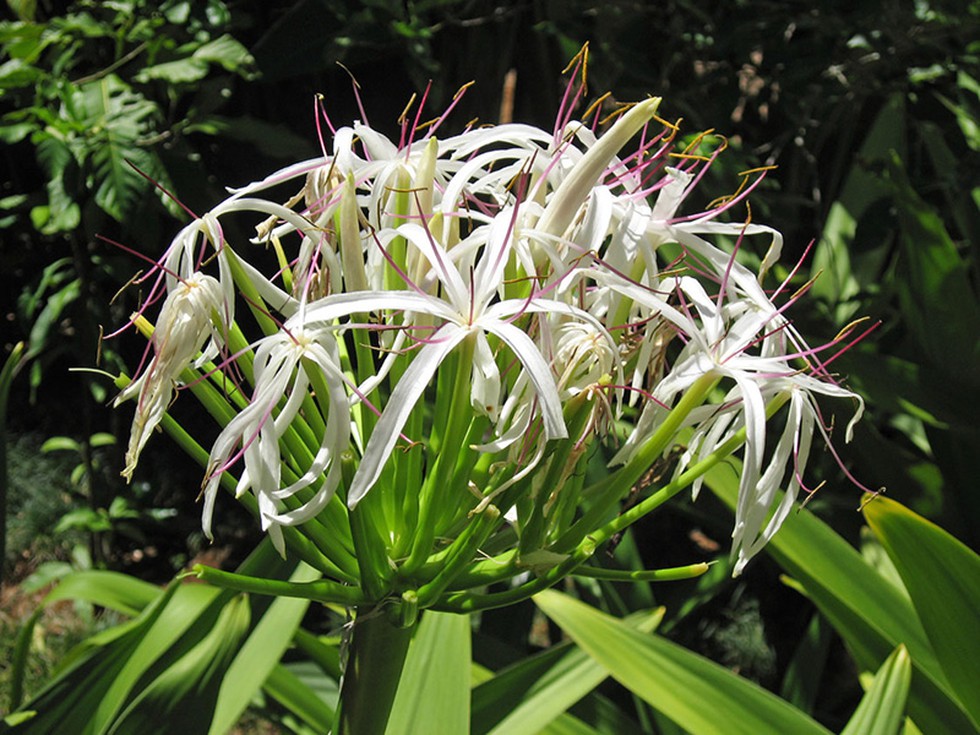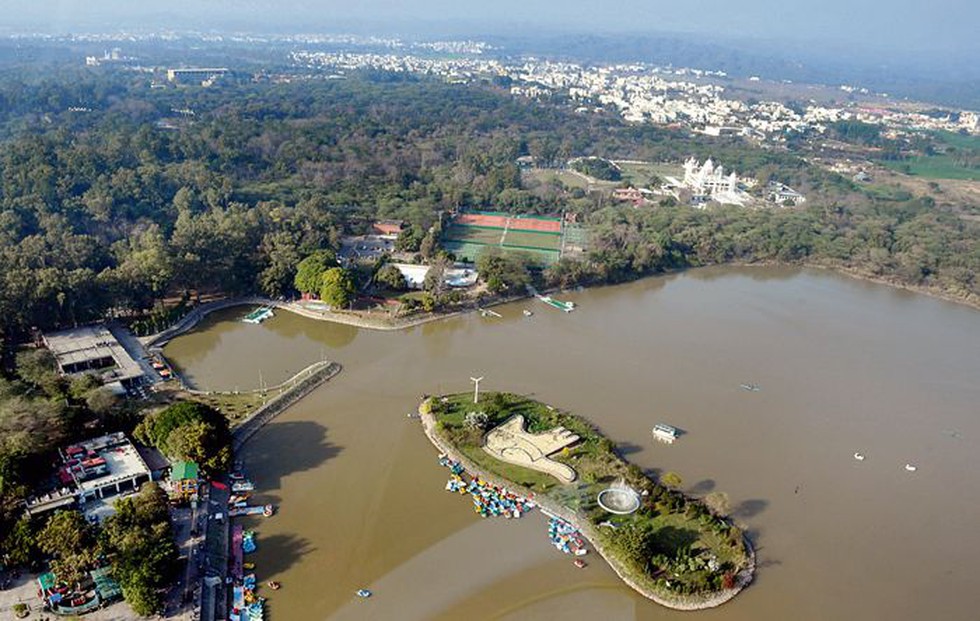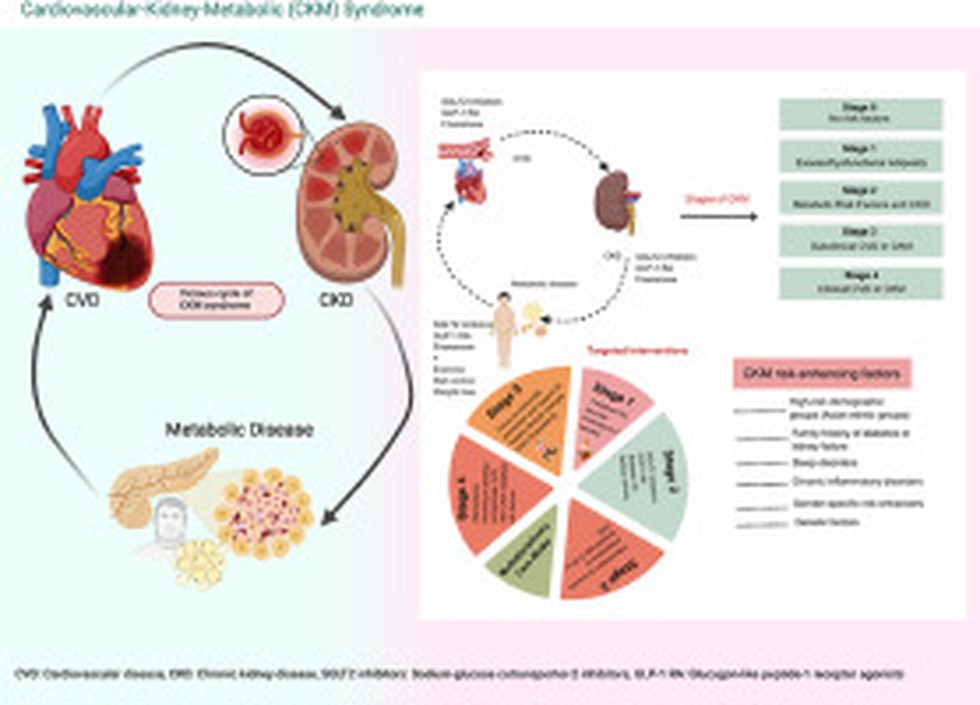
About Status of the Climate 2024 Report:
- It was released by the World Meteorological Organisation (WMO) during the United National Climate Conference (COP29) in Baku.
- Highlights:
- The year 2024 is on track to be the warmest year on record after an extended streak of exceptionally high monthly global mean temperatures.
- From January to September of this year, the global average temperature was 1.54 degrees above the pre-industrial level, with climate warming boosted by the El Niño weather pattern.
- It said 2015-2024 would be the warmest ten years on record, adding that ocean warming rates show a particularly strong increase in the past two decades and the planet’s seas will continue to heat up irreversibly.
- 2023 already showed the highest observed levels of greenhouse gas emissions on record, and real-time data indicates they continued to rise in 2024.
- The volume of heat-trapping carbon dioxide increased by 51% between 1750 and 2023.
- This is visible in the world’s oceans, which absorb about 90% of the excess heat from global warming. They reached record heat in 2023 already, and preliminary data for 2024 shows a continuation of that trend.
- Simultaneously, glaciers around the world are losing ice at an accelerating rate. In 2023 alone, glaciers receded more quickly than at any other point since records began 70 years ago—losing the equivalent of five times the volume of water held in the Dead Sea.
- The loss is attributed to extreme melting in North America and Europe.
- Rapid glacial melt contributes to rising sea levels. From 2014-2023, global mean sea level rose at a rate of 4.77 mm per year, more than double the rate between 1993 and 2002.
2. Wildlife Institute of India (WII)

About Wildlife Institute of India (WII):
- It is an autonomous institution established in 1982 under the Ministry of Environment, Forests and Climate Change, Government of India, for nurturing the growth of wildlife science in the country.
Location:
- It is located in Dehradun, Uttarakhand.
- It shares the boundaries with the famous Rajaji National Park.
- It is an internationally acclaimed institution, which offers training programs, academic courses, and advisory in wildlife research and management.
- It is actively engaged in research across the breadth of the country on biodiversity-related issues.
Objectives:
- Build up scientific knowledge of wildlife resources.
- Train personnel at various levels for conservation and management of wildlife.
- Carry out research relevant to management including the development of techniques appropriate to Indian conditions.
- Provide information and advice on specific wildlife management problems.
- Collaborate with international organizations on wildlife research, management, and training.
- Develop as a regional centre of international importance on wildlife and natural resource conservation.
- The institute carries out research work in the fields of study, which include Biodiversity, policy related to wildlife, Endangered Species, Wildlife management, forensic Wildlife research work, Eco-development, Spatial Modelling, and studies related to changing climatic conditions.
- The board is chaired by the Union Minister and has representatives from the centre and state governments as well as institutions and academia.
3. Walking Pneumonia

About Walking Pneumonia:
- It is a type of atypical pneumonia most commonly caused by the bacteria Mycoplasma pneumoniae, but other bacteria or viruses can also cause it.
- It often presents symptoms similar to those of a common cold or mild respiratory infection, including cough, sore throat, low-grade fever, and fatigue.
- While it may not cause severe illness, it can still be disruptive, with symptoms lingering for weeks if left untreated.
- Unlike typical pneumonia, which can lead to severe lung inflammation and difficulty breathing, walking pneumonia is often less intense, allowing people to carry on with their daily activities, which is how it earned its name in the 1930s.
- It is also called 'silent' pneumonia because sometimes people don't experience symptoms despite X-rays showing fluid-filled air sacs in the lungs.
- Transmission: It is contagious. It's spread through airborne droplets from close contact, such as coughing, sneezing, or speaking.
- Treatment: It is often manageable with rest, fluids, and, in some cases, antibiotics.

About Crinum andhricum:
- It is a new species of flowering plant.
- It was recorded from the Eastern Ghats of Andhra Pradesh.
- The species was named after Andhra Pradesh in recognition of the State where it was first found.
- It is part of the Amaryllidaceae family.
- It is the latest addition to India’s Crinum species, bringing the total to 16, with several being endemic to India.
- Features:
- It has distinct features, including wider, oblanceolate perianth lobes (the outer part of the flower) and a greater number of flowers per cluster, producing between 12 and 38 flowers in each.
- The plant’s pedicelled flowers (with a stalk-like structure) make it unique among species in the region.
- The flowers of Crinum andhricum are waxy white, blooming between April and June.
- Standing on a tall stem that reaches up to 100 cm, the plant is well-suited to dry, rocky crevices in the Eastern Ghats.
- The leaves are large, elliptic, and have smooth, entire margins.
- Based on its current limited distribution and environmental threats, the researchers have given Crinum andhricum a preliminary status of ‘Data Deficient’ under the IUCN guidelines.
5. Sukhna Lake

About Sukhna Lake:
- It is an artificial lake located in Chandigarh, India.
- It lies at the foothills (Shivalik hills) of the Himalayas.
- It was created in 1958 by damming the Sukhna Choe, a seasonal stream coming down from the Shivalik Hills.
- It is declared a National Wetland by the Government of India.
- The catchment area of the lake has rugged terrain and steep slopes, and the soils are predominantly alluvial sandy embedded with layers of clay and are highly susceptible to soil erosion by water run-off action.
- The water flowing into the lake is heavily loaded with silt.
Sukhna Wildlife Sanctuary:
- Adjacent to Sukhna Lake is the Sukhna Wildlife Sanctuary. Spread over an area of about 26 square kilometers, the sanctuary is home to various species of birds, mammals, and reptiles.
- It is a sanctuary for many exotic migratory birds like the Siberian duck, Storks, and Cranes, during the winter months.
6. Exercise Sea Vigil

About Exercise Sea Vigil:
- It is the National Level Coastal Defence Exercise conceptualized in 2018 to validate various measures that have been instituted towards enhancing maritime security since ‘26/11’.
- The concept of ‘Sea Vigil’ is to activate the Coastal Security apparatus across India and assess the overarching Coastal Defence mechanism.
- This fourth edition of Ex Sea Vigil involves 06 Ministries and 21 Organisations/ agencies.
- The exercise will focus on strengthening the security of coastal assets like ports, oil rigs, Single Point Moorings, Cable Landing Points and critical coastal infrastructure including the coastal population.
- This year participation by other Services (Indian Army and Air Force) and the planned deployment of a large number of ships and aircraft have enhanced the tempo of the exercise.
- This comprehensive exercise will engage complete coastal security infrastructure and all maritime stakeholders, including the fishing community and coastal populace, simultaneously.
- One of the aims of the exercise is to raise awareness amongst coastal communities about maritime security, and thus, the involvement of fishing communities, coastal populace, and students from NCC and Bharat Scouts and Guides will add to the fervour of the endeavour.
- Exercise Sea Vigil coordinated by the Indian Navy stands out as a national-level initiative that provides a holistic appraisal of India’s maritime defence and security capabilities.
- It is serving as a precursor to the Theatre Level Readiness Operational Exercise (TROPEX), conducted biennially by the Indian Navy.
7. Cardiovascular Kidney Metabolic Syndrome

About Cardiovascular Kidney Metabolic Syndrome:
- It is defined as a health disorder attributable to connections among obesity, diabetes, Chronic Kidney Disease (CKD) and Cardiovascular Disease (CVD), including heart failure, atrial fibrillation, coronary heart disease, stroke, and peripheral artery disease.
- Metabolic means getting energy from food. Obesity and Type 2 diabetes are metabolic conditions. Each of the four conditions in CKM syndrome can lead to or worsen one another.
- Cause:
- Extra adipose tissue(body fat) or body fat that’s abnormal causes CKM syndrome.
- This type of tissue releases substances that inflame and damage tissues in your heart, kidneys and arteries.
- Inflammation makes insulin less effective. It also encourages plaque and kidney damage to develop.
- Symptoms: Chest pain, Shortness of breath, Syncope (passing out), Swelling in your legs, feet, hands or ankles etc.
- Treatment: At an early stage, you may only need to make some lifestyle changes, like getting more physical activity. If you’re at a middle stage, you may need to take medicines to manage blood pressure, cholesterol and blood sugar.
8. Amorphophallus Titanum

About Amorphophallus Titanum:
- Amorphophallus Titanum (called Titan Arum in short) blooms once in a decade and is one of the largest in the world — growing over 10 ft in height.
- It is also called Corpse Flower.
- It was first described by Italian botanist Odoardo Beccari in 1878.
- Features
- It blooms approximately once every decade, with each flowering lasting merely 24 to 48 hours.
- It mimics the stench of rotting flesh to attract its pollinators — carnivorous bees and flies that feed on corpses.
- The dark, red interior of the spathe that is exposed when it is fully open looks like the surface of a piece of uncooked meat, and the spadix in the centre even warms up to provide the perfect simulation of a warm, abandoned body.
- It looks peculiar, with a tall, crooked, pale yellowish phallic structure — the ‘spadix’ — rising from the centre of what looks like an upturned meat skirt — its dark red, thick, waxy ‘spathe’, which is the spiral, petal-like structure that holds within it the inflorescence.
- Habitat: It blossoms on limestone hills in the rainforests of western Sumatra, Indonesia, where it is called bunga bangkai (bunga means flower and bangkai means corpse).
- Conservation status
- IUCN: Endangered
9. World Intellectual Property Indicators

About World Intellectual Property Indicators:
- The report reveals significant growth in patent, trademark, and industrial design applications across top economies.
Highlights of the report
- India has secured a spot in the global top 10 for all three major Intellectual Property (IP) rights—patents, trademarks, and industrial designs.
- India recorded the fastest growth in patent (+15.7%) applications in 2023 among the top 20 origins, marking the fifth consecutive year of double-digit growth.
- India ranks sixth globally for patents with 64,480 applications, with resident filings accounting for over half of all submissions (55.2%)—a first for the country.
- The report indicates a steady rise (36.4%) in India’s industrial design applications, which aligns with increasing emphasis on product design, manufacturing and creative industries within India.
- The top three sectors—Textiles and Accessories, Tools and Machines, and Health and Cosmetics—made up almost half of all design filings.
- Between 2018 and 2023, patent and industrial design applications more than doubled.
- India’s patent-to-GDP ratio also saw significant growth, rising from 144 to 381 in the past decade, indicating that IP activity is scaling alongside economic expansion.
- India ranked fourth globally in trademark filings, with a 6.1% increase in 2023. Nearly 90% of these filings were by residents, with key sectors including Health (21.9%), Agriculture (15.3%), and Clothing (12.8%) leading the way.
- India’s trademark office holds the second-largest number of active registrations worldwide, with over 3.2 million trademarks in force, reflecting the country’s strong position in global brand protection.
- Key findings show a record of 3.55 million patent applications filed worldwide in 2023, up 2.7% from 2022 with notable contributions from leading economies in Asia. This increase was largely driven by residents in China, the United States, Japan, South Korea, and India.
10. Booker Prize

About Booker Prize:
- It is the world’s leading literary award for a single work of fiction.
- Founded in the UK in 1969, the Booker Prize initially rewarded Commonwealth writers and now spans the globe: it is open to anyone regardless of origin.
- It aims to promote the finest in fiction by rewarding the best novel of the year written in
- Eligibility:
- The Booker Prize awards any novel originally written in English and published in the UK and Ireland in the year of the prize, regardless of the nationality of their author.
- The novel must be an original work in English (not a translation).
- It must be published by a registered UK or Irish imprint; self-published novels are not eligible.
- The winner receives £50,000, and each shortlisted author will be given £2,500.
- The Booker Prize Foundation: It is a registered charity established in 2002. Since its inauguration in 2005, it has been responsible for the award of the Man Booker Prize for Fiction and the Man Booker International Prize.
About Booker Prize:
- It is the world’s leading literary award for a single work of fiction.
- Founded in the UK in 1969, the Booker Prize initially rewarded Commonwealth writers and now spans the globe: it is open to anyone regardless of origin.
- It aims to promote the finest in fiction by rewarding the best novel of the year written in
- Eligibility:
- The Booker Prize awards any novel originally written in English and published in the UK and Ireland in the year of the prize, regardless of the nationality of their author.
- The novel must be an original work in English (not a translation).
- It must be published by a registered UK or Irish imprint; self-published novels are not eligible.
- The winner receives £50,000, and each shortlisted author will be given £2,500.
- The Booker Prize Foundation: It is a registered charity established in 2002. Since its inauguration in 2005, it has been responsible for the award of the Man Booker Prize for Fiction and the Man Booker International Prize.


























































































































































.png)
.png)
.png)
.png)
.png)


.png)
.png)
.png)





.png)
.png)






.png)
.png)
.png)
.png)
.png)
.png)
.png)
.png)
.png)

.png)







.png)
.png)


.png)
.png)
.png)


.png)

.png)
.png)





.jpg)

.png)
.png)


.png)

.png)
.png)
.png)

.jpg)

.jpg)


.png)

.png)
.png)
.png)
.png)
.png)
.png)
.png)
.png)
.png)
.png)




.png)

.png)





.png)
.png)
.png)
.png)
.png)
.png)
.png)
.png)
.png)
.png)
.jpg)
.jpg)

.png)
.png)
.png)
.png)
.png)
.png)
.png)
.png)
.png)
.png)
.png)
.png)
.png)
.png)
.png)
.png)
.png)
.png)
.png)
.png)
.png)
.png)



.png)
.png)

.jpg)
.jpg)


.jpg)
.jpg)
.jpg)
.jpg)
.jpg)

.jpg)








.jpg)
.jpg)
.jpg)
.jpg)
.jpg)

















.jpg)
.jpg)







.jpg)


















.jpg)
.jpg)






























































































.jpg)
.jpg)


























.jpg)

.jpg)










.jpg)








.jpg)




.jpg)










.jpg)


















.jpg)












































.jpg)














.jpg)
.jpg)
.jpg)





.jpg)

.jpg)
.jpg)





































































.jpg)


































.jpg)
.jpg)
















































.jpg)












.jpg)


.jpg)




.jpg)
.jpg)
.jpg)

.jpg)
.jpg)
.jpg)
.jpg)

.jpg)
.jpg)
.jpg)

.jpg)
.jpg)
.jpg)
.jpg)
.jpg)
.jpg)
.jpg)
.jpg)

.jpg)


.jpg)
.jpg)
.jpg)
.jpg)
.jpg)
.jpg)
.jpg)
.jpg)
.jpg)
.jpg)











.jpg)
.jpg)





.jpg)
.jpg)
.jpg)
























.jpg)
























.jpg)









.jpg)
.jpg)







.jpg)
.jpg)









































.jpg)
.jpg)
.jpg)
.jpg)
.jpg)

.jpg)
.jpg)
.jpg)
.jpg)
.jpg)


.jpg)
.jpg)
.jpg)
.jpg)
.jpg)

.jpg)
.jpg)
.jpg)
.jpg)
.jpg)
.jpg)
.jpg)
.jpg)
.jpg)
.jpg)
.png)

.png)
.png)

.png)
.png)
.png)
.png)


.jpg)
.jpg)

.jpg)
.jpg)
.jpg)

.png)
.png)
.png)
.png)
.png)
.png)
.png)

.png)
.png)
.png)
.png)
.png)
.png)
.png)
.png)
.png)
.png)





































































-min.png)



.png)




.png)








































